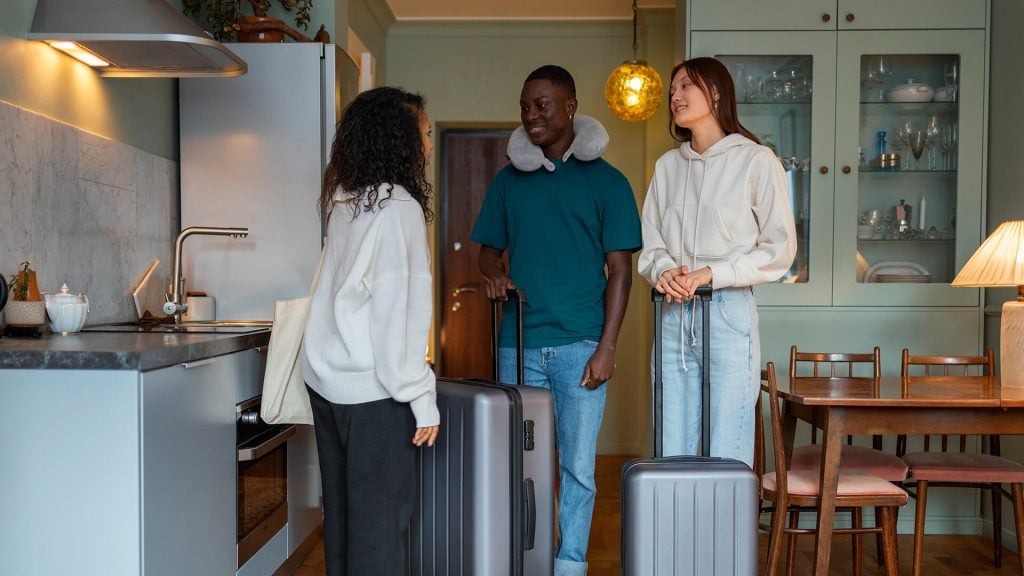As a vacation rental host, boosting income during the Airbnb slow season is crucial. With fewer bookings, every strategy matters. This article explains what the slow season is, how to identify it, and proven ways to maximize your rental income.
For easier management, Hostex can help. Its AI automation handles over 70% of daily hosting tasks and syncs calendars across platforms. Plans start at only $4.9 per month.

What Is the Airbnb Slow Season?
The Airbnb slow season refers to times when bookings naturally decline. Demand drops, leading to lower occupancy and income.
This period often coincides with off-peak travel months. For example, destinations that thrive in summer may slow in winter.
In short, the slow season means fewer guests, more empty nights, and tighter competition for bookings.
How to Identify Your Slow Season
Every location has different low periods. You need to study your market to find yours.
Key ways to identify the slow season include:
- Historical Data: Review past booking patterns to see when demand declines.
- Local Tourism Trends: Check when events or holidays usually bring visitors.
- Competitor Analysis: Track nearby rentals to see when they lower prices.
- Weather Impact: Seasonal weather often shapes guest demand and travel habits.
By combining these insights, you can map out your Airbnb slow season with accuracy.

7 Tips to Maximize Your Vacation Rental During Slow Season
During the slow season, vacation rental hosts need to maintain an open mindset and flexibility to adapt to market demand and changing traveler preferences. At the same time, they should actively seek opportunities and adjust their strategies to capture the maximum revenue.
1. Offer Flexible Cancellation Policies
Airbnb’s slow season is typically when the local weather conditions are not favorable. As a vacation rental host, you can offer more flexible cancellation policies to make travelers feel more at ease when booking your property.
2. Provide Competitive Pricing
Travelers during the slow season are usually not time-sensitive, and they tend to look for discounted prices. You can offer prices much lower than the peak season to attract more guests to book your vacation rental. You can also consider offering special discounts for extended stays to further increase your calendar occupancy.
3. Enhance Guest Experience
Improving guest experience can encourage them to leave positive reviews, which can also lead to repeat bookings. During the slow season, you can enhance the guest experience by providing additional amenities or personalized services, such as welcome baskets, extra towels, or local recommendations.
4. Adjust Marketing Strategies
During the slow season, it’s crucial to adjust your pricing and marketing strategies to reflect market demand. You can analyze your booking trends from previous shoulder seasons to adjust your pricing and marketing strategies accordingly. You can also use Pricelabs, a professional dynamic pricing platform integrated with Hostex, to help you adjust your prices in real time.
5. Promote Local Activities and Attractions
Take advantage of local activities and attractions to attract travelers seeking unique experiences. Promote these activities and attractions on your website and social media platforms to showcase the surrounding areas, which can encourage potential guests to book your vacation rental.
6. Collaborate with Local Businesses
Partnering with local businesses to create attractive packages is another way to increase revenue. This can include discounted tickets, restaurant deals, or other special experiences. Collaborating with other businesses can help increase your visibility and attract more guests to book your vacation rental. and encourage repeat stays, which are key to a sustainable short-term rental business.
7. Market Your Rental Across Multiple Channels
List your property on major booking platforms like Airbnb, Vrbo, and Booking.com to maximize exposure. Additionally, consider creating your direct booking website. This helps you avoid OTA commissions and allows seamless integration with Google Vacation Rentals for increased traffic. Direct bookings also encourage repeat guests and better control over your business.

Final Thought
Succeeding during the Airbnb slow season is not only about lowering prices or loosening cancellation rules. It also requires long-term planning. For example, this is the perfect time to refresh your listing photos, update property descriptions, or even test new amenities that can stand out during the next peak season.
You can also use this period to analyze guest feedback, improve operational workflows, and build stronger relationships with past guests through email marketing or loyalty discounts. These efforts may not bring immediate bookings, but they create a stronger foundation for sustained growth.
In short, the slow season is not a setback. It is an opportunity to refine your business, strengthen your brand, and prepare for higher occupancy when demand returns. By combining smart pricing, guest-focused experiences, and multi-channel marketing, hosts can turn the Airbnb slow season into a season of growth.




Pretty! This was a really wonderful post. Thank you for your provided information.